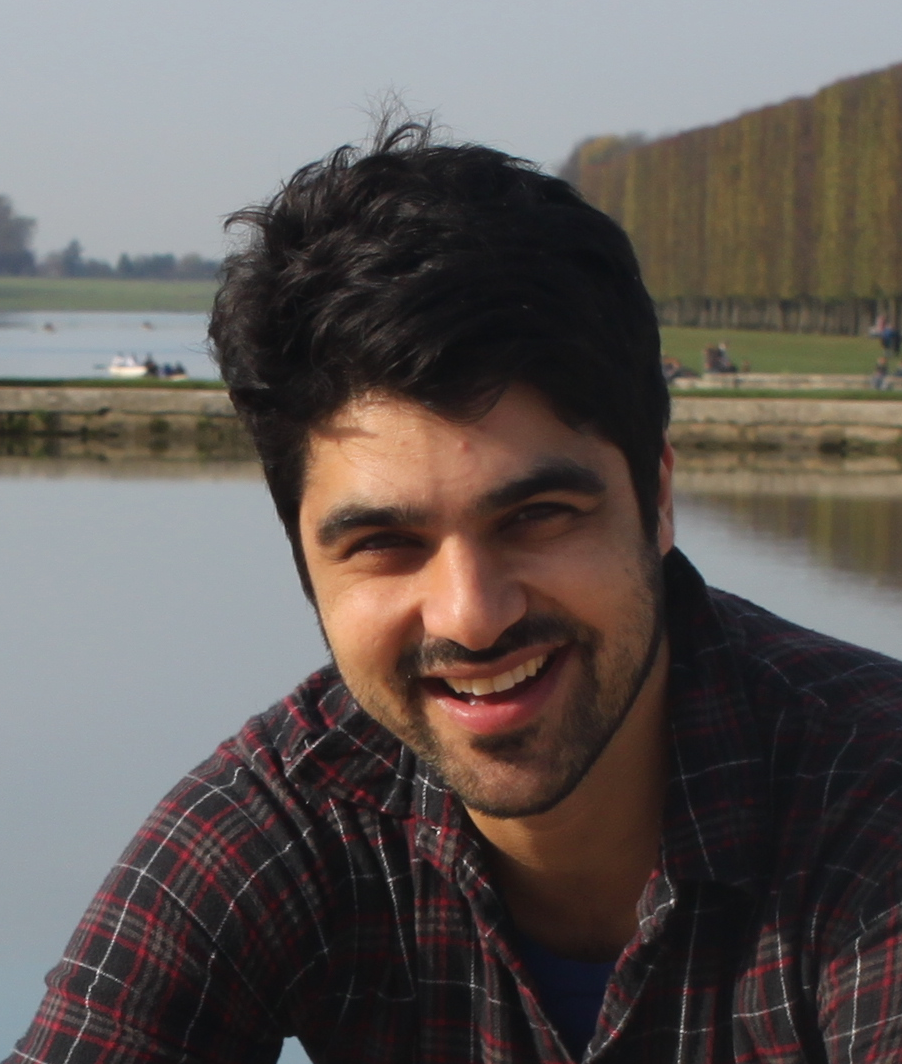
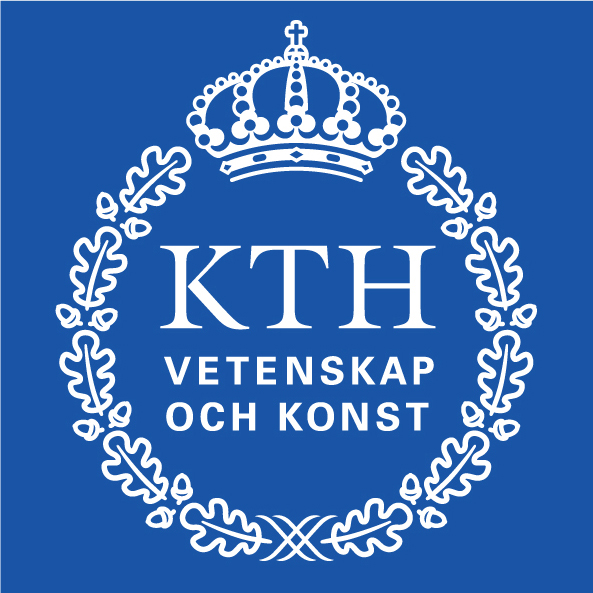
![]()
home
news
papers
other
contact
KTH Mechanics
100 44 Stockholm
Sweden
shervin (at) mech.kth.se
+46(0)8-790 6770
visiting adress
Room: 2718
Osquars Backe 18
Stockholm
Tweets by @BagheriShervin
students
Ugis Lacis (Researcher)
[Project]
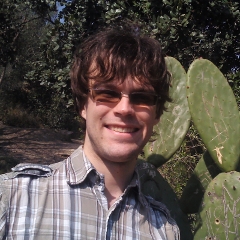
This project is concerned with bio-inspired passive means for controlling fluid flows. We will develop a formulation and an associated numerical method to treat the dynamics of filamentous structures anchored to a surface and immersed in a viscous incompressible fluid. For some configurations, the particular choice of coating (elasiticy, porousity, density etc) will be inspired from the skins, furs and scales of flying and swimming animals. The effects of the passive coatings on propulsion as well as on aerodynamic properties will be assessed using numerical simulations.
This project is financed by VR (Swedish Research Council) and Linné Flow Centre.
Sudhakar Yogaraj (Postdoc)
[Project]
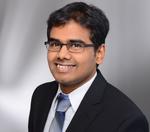
Sudhakar is Marie Curie Fellow who is working on passive surface methods for controlling the turbulent/separated flows.
This project is financed by European Comission.
Pierluigi Morra (2nd year)
[Project]
This project is concerned with applying active control techniques to delay the laminar-turbulent transition in wall-bounded flows. We will investigate various techniques for the robust and efficient control of disturbances evolving in a boundary layer, with the objective to employ these controllers to delay transition on wings of a glider airplane. The final aim is to assess the efficiency and robustness of the numerically developed controller in true free-flight experiments, performed by collaborators at the University of Darmstadt.
This project is mainly financed by VR (Swedish Research Council). The supervision is in collaboration with Professor Dan Henningson.
Johan Sundin (1st year)
[Project]
This aim of this project is simulate flows over non-smooth surface with microscale structures (pillars, grooves) that are elastic and that may be lubricated with a second fluid.
Aidan Rinehart (1st year)
[Project]
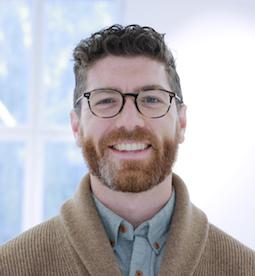
Postdocs
Marie Couliou (Postdoc)
Water table experiment of turbulent flows over flexible pillars
Enrico Rinaldi (Postdoc)
Fluid flows with variable properties
Nicolas Brosse (2013-2014)
Fluid and structure interaction with soap films
Graduate students
Nicolo Fabbiane (Co-advisor, 2016)
Transition delay in boundary-layer flows via reactive control
Reza Dadfar (Co-advisor, 2014)
Stability and control applied to flows complex geometries
Damiano Natali (Visiting PhD Student, Genova, 2014)
Modeling poroelastic filaments
Undergraduate students
Johan Sundin (BSc Student, KTH, 2015)
Controlling the Laminar-to-Turbulent Transition in a Fluid Flow
Varuna Dharmadasa (BSc Student, KTH, 2014)
Behavior of pop up feathers during flow separation
Emanuele Rondanina (MSc Student, Genova, 2014)
Numerical simulation retinal deattachment
Zaccaria Orlando (MSc Student, Genova, Italy, 2013)
[Project]
In this project we intend to study the effect of hair or filament on transport and mixing in so called pulsatile internal flows. Such conditions are found for example in bio-mechanical applications such as blood vessels, nasal air flow or in micro fluidic applications such as micro channels. The work will be conducted using an existing numerical code solving the underlying conservation equations for mass and momentum (Navier-Stokes equations), for incompressible Newtonian fluids, and the structure (flexible filaments with prescribed mass and bending stiffness) are modeled using an immersed boundary technique.
Cecile della Valle (BSc, Ecole Polytechnique, France, 2012)
background
2015 Associate Professor, KTH, Stockholm, Sweden
2014 Docent in Flow Control, KTH, Stockholm, Sweden
2012 Assistant Professor, KTH, Stockholm, Sweden
2011 Marie Curie Fellow (IEF), DICAT, Genoa, Italy
2010 PhD in Fluid Mechanics, KTH, Stockholm, Sweden
2006 M.S. in Engineering Physics, Uppsala Univ., Sweden
major grants
2016 SSF Future Research Leaders 6
2016 Wallenberg Academy Fellow
2015 Göran Gustafssons Prize for young researchers
2015 Project Grant Junior Researcher, VR
2011 Marie Curie Intra-European Fellowship, FP7
2011 Junior Research Position, Swedish Research Council (VR)
movies
Stability of a jet in crossflow
[Description] [mpeg (low-res)] [mpeg (high-res)]
We have produced a fluid dynamics video with data from Direct Numerical Simulation (DNS) of a jet in crossflow at several low values of the velocity inflow ratio R. We show that, as the velocity ratio R increases, the flow evolves from simple periodic vortex shedding (a limit cycle) to more complicated quasi periodic behavior, before finally exhibiting asymmetric chaotic motion. We also perform a stability analysis just above the first bifurcation, where R is the bifurcation parameter. Using the overlap of the direct and the adjoint eigenmodes, we confirm that the first instability arises in the shear layer downstream of the jet orifice on the boundary of the backflow region just behind the jet.
The movie won the Milton Van Dyke prize at APS, Long Beach, California, 2010
Control of 3D disturbance in a flat-plate boundary layer
The video (thanks to O. Semeraro) shows direct numerical simulations of the linearized Navier-Stokes equations describing the evolution of small-amplitude disturbances in a flat-plate boundary layer flow at a transitional Reynolds number. In the left-top frame of the movie, the development of a three-dimensional Tollmien-Schlichting wavepacket is shown. The kinetic energy of the disturbance is shown with a black line in the right figure, where an exponential growth of disturbance is observed. The left-bottom frame shows the same disturbance, but now in the presence of an array of sensors and actuators, connected via an feedback control law. The growth of the disturbance (red line in right figure) is reduced by orders of magnitude due to the applied control.
codes and equipment
FreeFem++ code for computing effective boundary conditions at porous free-flow interface
This software is a script compilation for FreeFem++
Soap film tunnel
We have a soap film apparatus, to accompany our theoretical and numerical predictions. The flowing soap films are used to perform two dimensional fluid dynamics experiments. Typical parameters for the system are: flow speeds from 0.5 to 4m/s, film thickness be- tween 1 and 10,mm, and typical film sizes are 3m tall and 10cm wide.
Fluid-Structure interaction (Navier-Stokes) solver
This is our principal tool for solving fluid-structure interaction problems. The flow solver based 2nd-order finite volume method on a staggered grid, the approach for modeling rigid and fixed boundaries is based on the immersed boundary projection method and the approach for handling the two-way coupling between fluids and flexible structures is based on the penalty immersed boundary method. The code is available in both C and Matlab. Send me an email (with a motivation) if your are interested in a copy.
Matlab code for Kuramuto Sivashinsky equation
[Description] [Matlab files] [Researchers using the code]
A suite of scripts for the active control of the linerized Kuramuto-Sivashinsky equation, which is a good model for Tollmien-Schlichting waves in flat-plate boundary layer. Both model-based (LQG, MPC) and model-free (LMS, X-filtered LMS) methods are applied and compared. Written by Nicolo Fabbiane.
The code is free to use for educational purposes. If you intend to use the code for research, please notify me via an email.
Matlab code for Ginzburg-Landau equation
[Description] [Matlab files] [Researchers using the code]
The code is free to use for educational purposes. If you intend to use the code for research, please notify me via an email, so I can add you to the list below. Currently, following research groups are using the code:
-
Prof. Clarence W. Rowley, Princeton Univeristy
-
Prof. Thomas Bewley, University of San Diego
-
Prof. Francois Gallaire, EPFL, Lausanne, Switzerland
A suite of scripts for the stability analysis and control design applied to a model of spatially developing flows. The scripts reproduce the figures in following article.
The Matlab scripts compute the following for the complex Ginzburg-Landau equation:
-
Neutral stability curves
-
Perturbation in globally unstable flow
-
Linear transient growth
-
Global, POD and balanced modes
-
Optimal disturbance and optimal energy growth
-
Global spectrum and the pseudospectrum
-
Input-output behavior: evolution in space and time of the state and time signals when forced by random noise
-
Response to impulsive input
-
Input-output pseudospectra and frequency response
-
Response to stochastic forcing
-
Controllability and observability Gramians
-
Spatial support of leading global, POD and balanced modes
-
Actuator and sensor placement for the supercritical
configuration
-
Impulse response, perturbation energy and spectrum of the uncontrolled system and LQG-controlled system
-
Model reduction error of the POD, balanced and global modes.
-
Frequency response of reduced-models
-
HSV of exact and snapshot-based balanced truncation
-
Mean of the error covariance from solving the Riccati-equation compared to estimation error from the estimator. The rms-value of the error and the state.
-
Controlled Ginzburg-Landau equation with stochastic excitation
-
Comparison of the frequency response of the open-loop with LQG and Hinfty approach